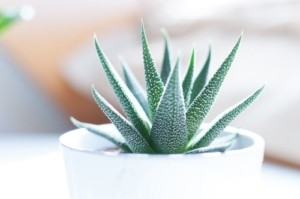Why Plants Need Sunlight

All plants need sunlight
It’s a simple fact. All green plants need light to survive and grow. Without light they could not exist. They all use light as a source of energy for photosynthesis, a chemical reaction that occurs only in the presence of light. Natural light from the sun, for economic reasons, is the light source used to produce commercial crops, although artificial light is often used to supplement natural light for some ornamental crop production. Plants can even survive solely on artificial light as their light source if it is bright or intense enough.
Lighting for life
In nature, sunlight energy fuels the photosynthesis reaction, which takes place in the chlorophyll of the leaves. A plant requires this light to manufacture its food. Without enough light a plant will deteriorate and eventually die. Every plant has a Light Compensation Point (LCP) where the production of food through photosynthesis equals the use of food. Light levels above this LCP point cause the plant to grow and store excess food. Light levels below this LCP point will cause the plant to deplete its food reserves.
Light intensity combined with duration of the light are critical factors to consider for indoor plants. Light intensity determines the rate of growth for plants, and in general the rate of photosynthesis is in direct proportion to the light intensity until some maximum level is reached. Some plants simply need more light to survive than others. This is part of their genetic code. For example, Ficus, will always need more light to survive than Aglaonema.
For indoor plants we typically use a light intensity classification that is broken into three categories; low, medium and high light. All three of these classifications assume at least eight hours of duration in each 24 hour period. Low light plants are those that can survive (and even slowly grow) in areas of light with 50 to 75 foot-candles. Medium light plants are ones that survive in the 75-150 foot-candle range. High light plants need light in excess of 150 foot-candles to survive. Interiorscape reference books will always include foot-candle ranges for the common plants. One handy book is the Guide to Interior Landscape Specifications, published by ALCA. Use this guide combined with a foot-candle meter to help determine which plants will do best in specific locations.
Most plants are phototropic – turning and/or bending toward the light source. Plants will also show you if they light is too low for them by stretching out the internode. Over time the stem will elongate and the plant will become weak and spindly. Plants in low of light will also shed leaves fast than they produce new ones, trying to get themselves thinned down to survive. New growth will be softer and smaller in response to the low light.
Keep an eye on your plants
As a plant technician, pay attention to these leaf signs and adjust your watering accordingly. Plants in low light will need very little water and will die faster if they are left to stand in water.
One of the joys of being an interiorscape technician is to watch your plant friends grow and develop. It’s important to always be aware of the light conditions of your plants and to help adjust the light for their optimum growth in anyway that you can.
